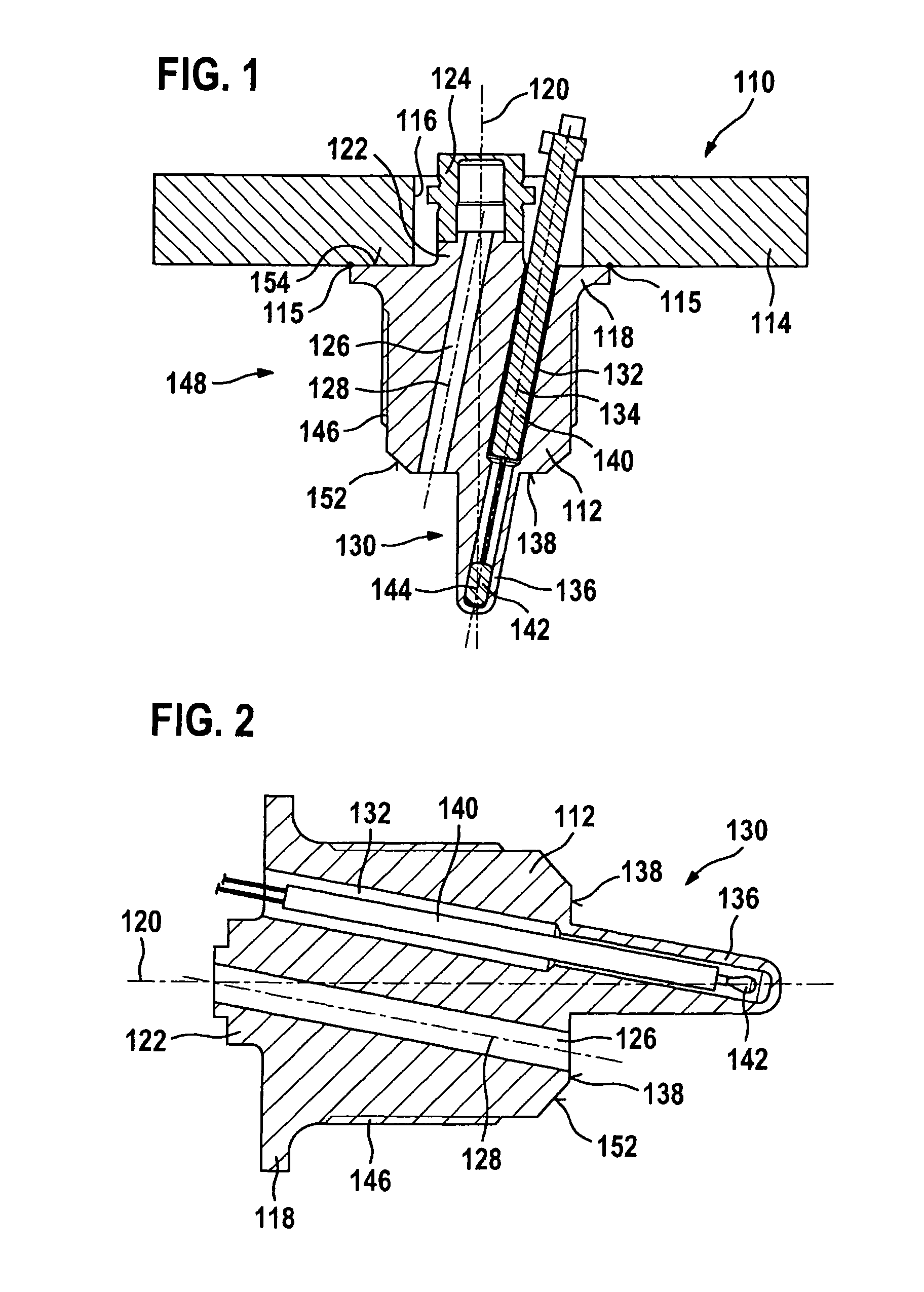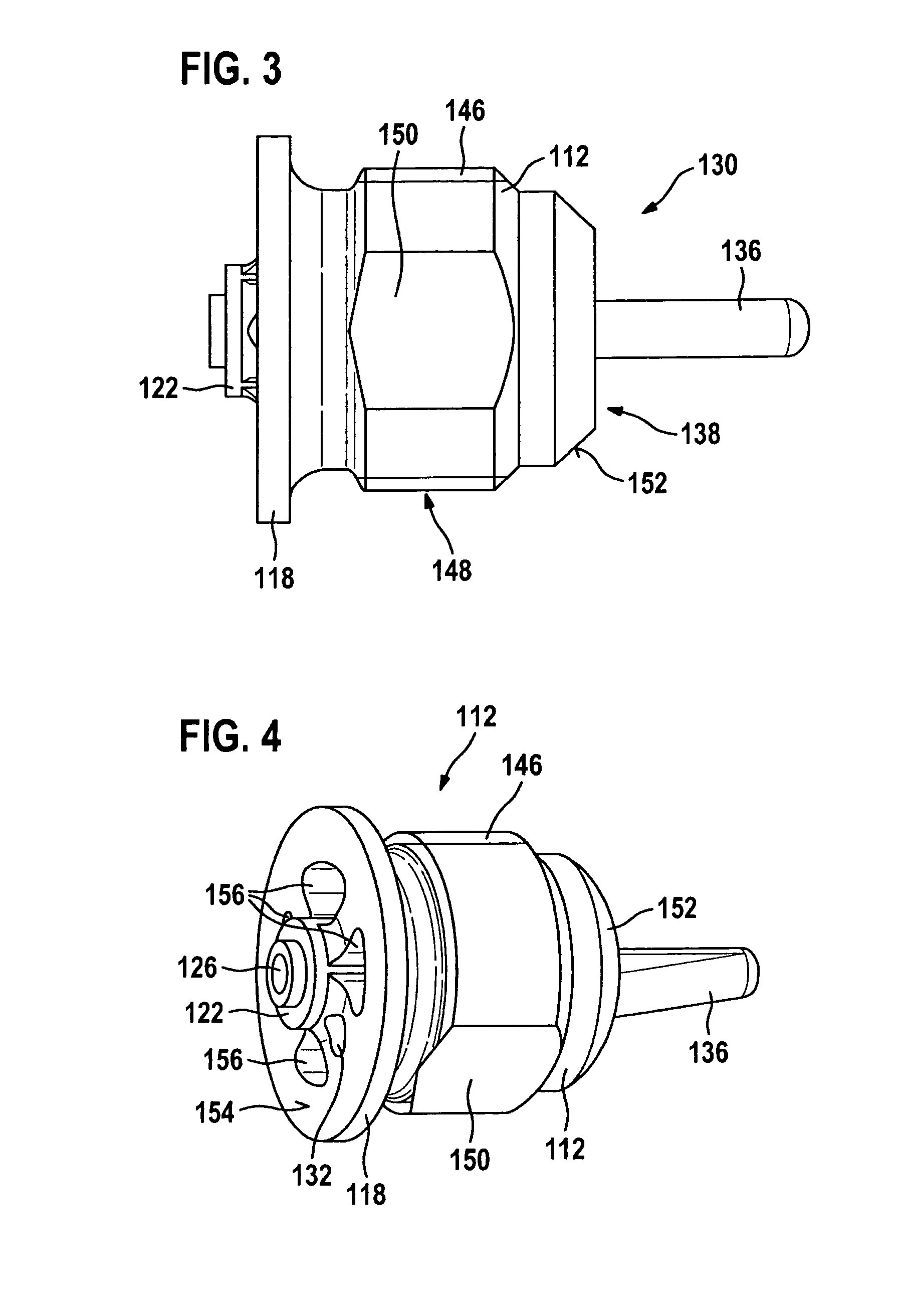Sensor plug for combined pressure and temperature measurement
a technology of combined pressure and temperature measurement, which is applied in the direction of instruments, heat measurement, heating types, etc., can solve the problems of reducing the reproducibility of the proposed measurement concept, increasing assembly time and assembly costs, and not ensuring the pressure tightness, so as to achieve good robustness and good reproducibility
- Summary
- Abstract
- Description
- Claims
- Application Information
AI Technical Summary
Benefits of technology
Problems solved by technology
Method used
Image
Examples
Embodiment Construction
[0037]FIGS. 1 through 4 depict a first exemplifying embodiment of a sensor plug 110 according to the present invention. FIG. 1 is a sectioned depiction of sensor plug 110, FIG. 2 a sectioned depiction of a sensor body 112 of sensor plug 110, FIG. 3 a side view of sensor body 112, and FIG. 4 a perspective depiction of sensor body 112. These Figures will be described below in combination.
[0038]Sensor plug 110 according to FIG. 1 has, in addition to sensor body 112, a hexagon 114 having a central orifice 116. Sensor body 112 is joined to hexagon 114 by an intermaterial connection 115 (e.g. welding) in such a way that sensor body 112 is disposed concentrically with central orifice 116, and the upper side of sensor body 112 is accessible through central orifice 116. The intermaterial connections of the individual components are labeled in general in the Figures with the reference character 115. For the purpose of this intermaterial connection 115, sensor body 112 has on its upper end, fa...
PUM
| Property | Measurement | Unit |
|---|---|---|
| angle | aaaaa | aaaaa |
| angle | aaaaa | aaaaa |
| temperatures | aaaaa | aaaaa |
Abstract
Description
Claims
Application Information
 Login to View More
Login to View More - R&D
- Intellectual Property
- Life Sciences
- Materials
- Tech Scout
- Unparalleled Data Quality
- Higher Quality Content
- 60% Fewer Hallucinations
Browse by: Latest US Patents, China's latest patents, Technical Efficacy Thesaurus, Application Domain, Technology Topic, Popular Technical Reports.
© 2025 PatSnap. All rights reserved.Legal|Privacy policy|Modern Slavery Act Transparency Statement|Sitemap|About US| Contact US: help@patsnap.com



